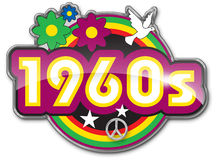The 60s Official Site
Where Music is Our Middle Name
Quick Links
Your Daily Oldies Fix Top Ten Countdown Soundtrack of the 60s Solid Gold Memories Jukebox Music More Jukebox Music
Vibration of a Nation Television of the 50s and 60s Remember When Do You Remember These 60s Slang
Things You Just Don't Hear Anymore 60s TV Commercials Chickenman Episodes Woodstock This Week's Number One Hits
The Early Years of Rock and Roll
All the content menu is listed on the left menu border bar
Daylight Savings - Chaos in the 60s
A Brief HistoryDaylight savings time (DST) has been around in some form or another for quite sometime. The idea of daylight savings time originated from Benjamin Franklin really as a humorous and witty comment. He first spoke of the idea publicly in an essay titled "An Economical Project" which he conveyed as an American delegate while in Paris in 1784. His original intent with the essay was to be whimsical, by poking fun at the tendency of the French to sleep until noon. The essay pointed out that if 100,000 Parisian families burned half a pound of candles per hour for an average of seven hours per day, they would use a total of 64,050,000 pounds of candle wax, costing an immense sum of money that the city of Paris could save every year by implementing a Daylight Saving Time. Many of his friends an acquaintances became fascinated with the idea and continued to discuss it with him. Then in London, around 1907, a builder named William Willett was the first to seriously try to persuade officials that setting clocks ahead by 20 minutes on each of the four Sundays in April and retarding them by the same amount on the four Sundays in September would be beneficial to everyone in helping get some extra daylight time over the summer for work. Willett lobbied mightily and spent a fortune trying to convince others, but most just laughed at him and he died about one year before it became a reality. From 1945 to 1966, there was no US federal law about daylight saving time. By the early 1960s, observance of daylight saving time was inconsistent, with some states on DST, and no agreement when to change clocks. In 1961, when studies made by the committee for time uniformity studied the issue found that along a 35-mile stretch of highway between Moundsville, West Virginia, and Stuebenville, Ohio, every traveler passed through no less than seven time changes. Widespread confusion was created during the 1950s and 1960s when each U.S. locality could start and end Daylight Saving Time as it desired. One year, 23 different pairs of DST start and end dates were used in Iowa alone. For exactly five weeks each year, Boston, New York, and Philadelphia were not on the same time as Washington D.C., Cleveland, or Baltimore—but Chicago was. And, on one Ohio to West Virginia bus route, passengers had to change their watches seven times in 35 miles! The situation led to millions of dollars in costs to several industries, especially those involving transportation and communications. Extra railroad timetables alone cost the today’s equivalent of over $12 million per year. Noted ChaosThis chaos of changing the clocks had an effect on my family. I remember walking to church holding my younger sister's hand and arriving when church was just letting out. Some "smart ass" high school kid said "kind of late aren't you." My sister and I walked home a little embarrassed and of course our mother wondered why we were home so early and we explained our embarrassing experience. Mom said it was daylight savings time and she didn't know if Circleville, Ohio of all places was observing it. She set the clocks up an hour that Sunday morning. On Monday we went to school and we were an hour early as she was for work. This was a situation that was normal across the entire state of Ohio in 1960 or 1961. Part of the town observed it and other parts did not. The same problem existed throughout the nation. A man, born just after 12:00 a.m. DST, circumvented the Vietnam War draft by using a daylight saving time loophole. When drafted, he argued that standard time, not DST, was the official time for recording births in his state of Delaware in the year of his birth. Thus, under official standard time he was actually born on the previous day—and that day had a much higher draft lottery number, allowing him to avoid the draft. DJs in Ohio and TV comedians everywhere made fun of daylight savings time and the chaos and humorous situation it caused. This continued until 1966 when Federal laws were enacted governing the implementation of daylight savings time. Not all states observe daylight savings time. Hawaii, American Samoa, Guam, Puerto Rico, the Virgin Islands, and the state of Arizona (not the Navajo Indian Reservation, which does observe). Navajo Nation participates in the Daylight Saving Time policy, due to its large size and location in three states." This presents problems because you have to try to remember how many hours they are behind or ahead of you especially if making a phone call to a state that does not observe daylight savings time. |
|





